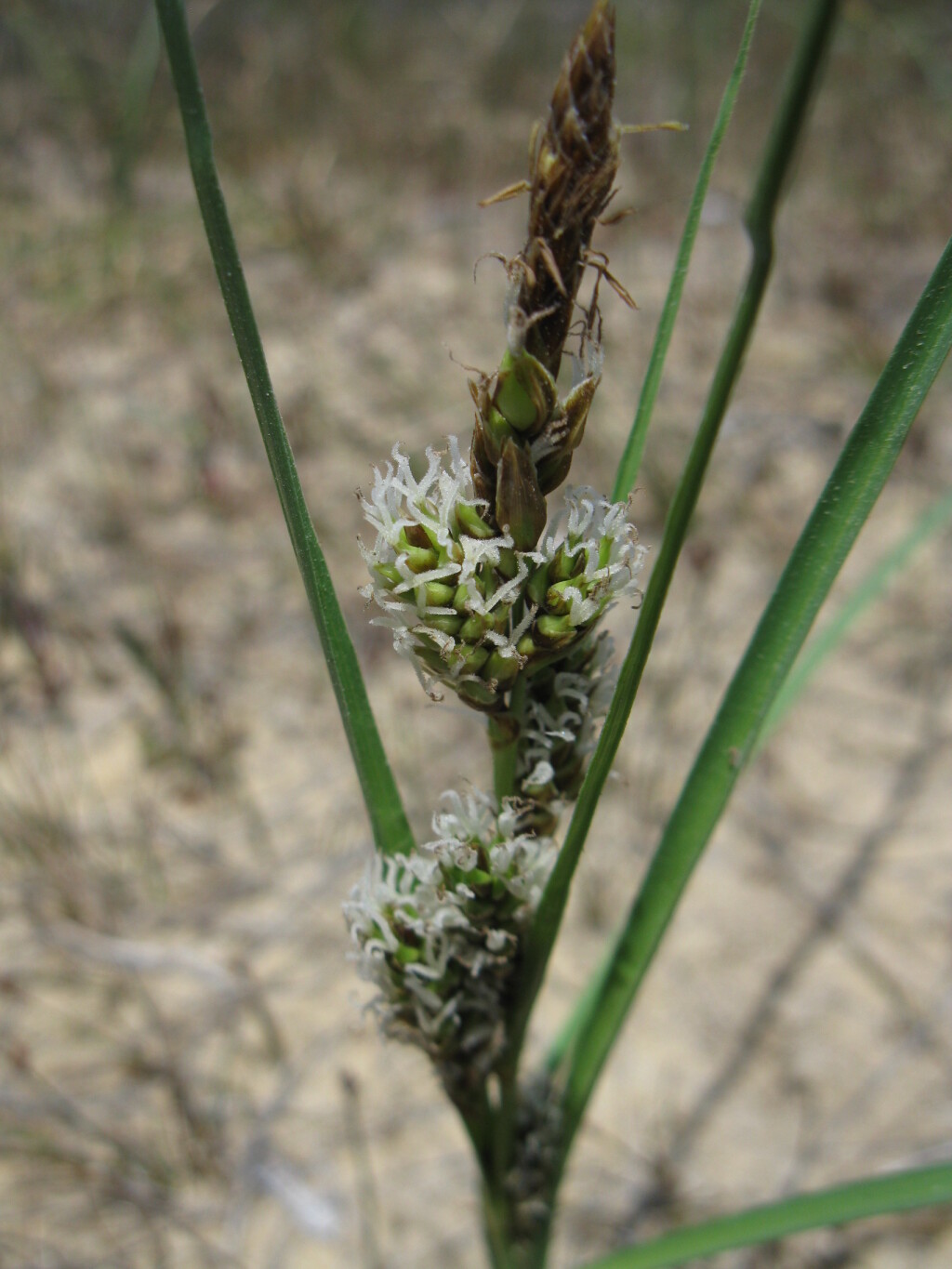Carex pumila
Thunb. ex Murray Strand SedgeRhizome very long; shoots loosely tufted. Culms erect, terete to trigonous, smooth, 5–20 cm long, c. 1 mm diam. Leaves exceeding culms, to 50 cm long, 2.5–6 mm wide; sheath yellow-brown; ligule rounded to truncate. Inflorescence narrow, erect, 5–10 cm long, with 4–7 spikes solitary at nodes; lowest involucral bracts exceeding inflorescence. Spikes sessile, erect at maturity; 1–4 upper spikes male, 1–4 cm long, ± contiguous; lower spikes female, ± distant, 1.5–2 cm long, more than twice the diameter of the male spikes; glumes acute to obtuse, yellow-brown to red-brown with whitish margins near apex; female glumes 3.5–4 mm long; utricles 4.5–8 mm long, 2.0–3.5 mm diam., broad-ovoid, obscurely nerved, glabrous, thick, corky, yellow-brown, occasionally tinged dark red-brown; beak c. 1 mm long, with apex bifid; style 3-fid. Nut ovoid, trigonous, yellow-brown. Flowers spring.
Wim, GleP, VVP, GipP, OtP, WaP, EGL, WPro, HSF, OtR. Also SA, Qld, NSW, Tas. New Zealand, South America, Asia. Scattered on sand-dunes along the coast, locally common and important as a sand-binder.
Similar to Carex bichenoviana (see profile for that species).
Wilson, K.L. (1994). Cyperaceae. In: Walsh, N.G.; Entwisle, T.J., Flora of Victoria Vol. 2, Ferns and Allied Plants, Conifers and Monocotyledons, pp. 238–356. Inkata Press, Melbourne.
 Spinning
Spinning


